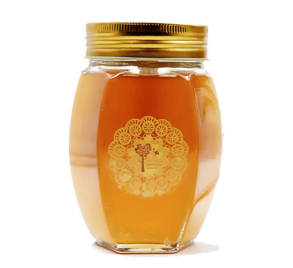Today we 1kg Honey Glass Jar Factory come to summarize Factors affecting glass crystallization.
The degree of crystallization and the crystallization tendency of the glass are directly related to the chemical composition of the glass. The chemical composition of the glass is the internal cause of the crystallization of the glass, and the temperature and time are external factors. It is not that any substance is melted at a high temperature and then cooled to form a glass. For a simple example, if salt or soda is melted at a high temperature and rapidly cooled, glass cannot be formed, and quartz is easily melted at a high temperature and then cooled to form glass (quartz). glass). From the point of view of phase equilibrium, the simpler the composition of the general glass system, the greater the probability that the components of the compound collide with each other to form a certain lattice when the melt is cooled to the liquidus temperature, and the glass is more likely to be analyzed. crystal. For example, quartz glass is a unit of SiO2, which is prone to crystallization when the temperature system is improperly controlled in production. For multi-component glasses, the tendency to devitrify is small. When determining the composition of the glass, reference can be made to the phase diagram so that the glass composition should be chosen near the phase boundary or the eutectic point. The generally practical composition of soda-lime-silica glass is roughly selected within a narrow range around the boundary between the phosphorous quartz and the barrier stone. Therefore, the variation in the CaO content in the composition sensitively governs the onset temperature of crystallization. When the SiO2 content is constant, the CaO content is lowered, and the starting crystallization temperature is lowered.

In silicate glass species, the degree of network connection plays an important role in glass crystallization. Generally speaking, the lower the content of the network outer body, the greater the degree of connection. During the melt cooling process, it is difficult to adjust to a regular arrangement, that is, the more difficult it is to devitrify. On the contrary, the more the network breaks, the more the glass is more susceptible to crystallization.
In the case of a large amount of alkali metal oxides and a relatively severe network fracture, the addition of intermediate oxides such as MgO, ZnO, A12O3, etc., can re-connect the fractured silicon tetrahedrons to reduce the crystallization ability of the glass. A12O3 can significantly reduce the crystallization ability of glass in soda-lime silicate glass and borosilicate glass systems.
If you need 180ml Jam Glass Jar, please contact us.
Copyright © Xuzhou Wooyue Glass Co.,Ltd. All Rights Reserved |Sitemap
